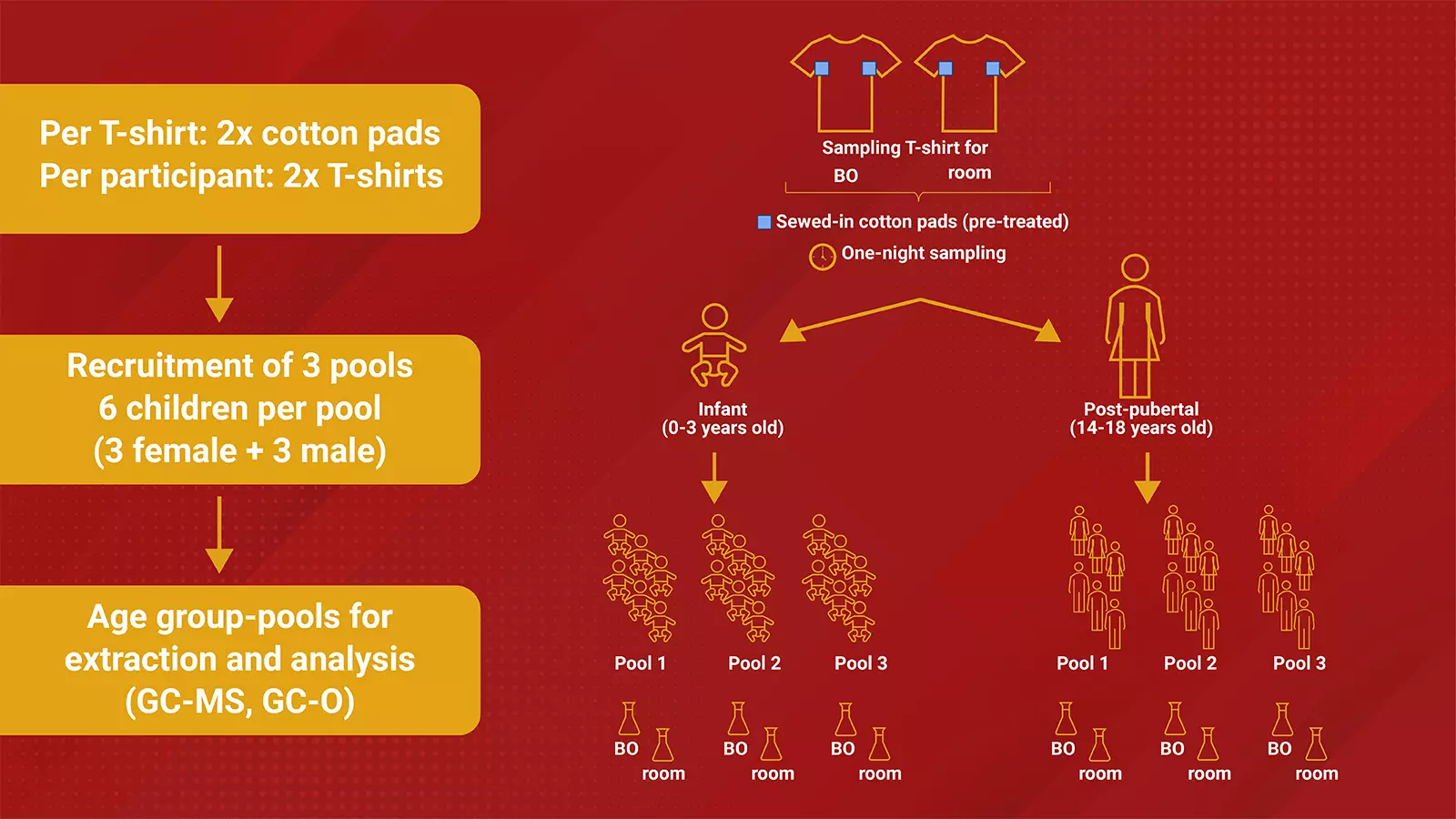
- Home
- News
- Analysis
- States
- Perspective
- Videos
- Education
- Entertainment
- Elections
- World Cup 2023
- Features
- Health
- Business
- Series
- Economy Series
- Earth Day
- Kashmir’s Frozen Turbulence
- India@75
- The legend of Ramjanmabhoomi
- Liberalisation@30
- How to tame a dragon
- Celebrating biodiversity
- Farm Matters
- 50 days of solitude
- Bringing Migrants Home
- Budget 2020
- Jharkhand Votes
- The Federal Investigates
- The Federal Impact
- Vanishing Sand
- Gandhi @ 150
- Andhra Today
- Field report
- Operation Gulmarg
- Pandemic @1 Mn in India
- The Federal Year-End
- The Zero Year
- Premium
- Science
- Brand studio
- Home
- NewsNews
- Analysis
- StatesStates
- PerspectivePerspective
- VideosVideos
- Entertainment
- ElectionsElections
- Sports
- Loading...
Sports - Features
- BusinessBusiness
- Premium
- Loading...
Premium

When we pick up babies and cuddle them in our arms, we feel the powerful urge to take a deep breath and smell them. The whiff of scent, a mixture of milk, soap and baby talcum, is pleasant. Young parents know babies just out of the bath, even without talc, are sweet-smelling.On the contrary, teens, especially boys, smell like goats and have an undertone of urine despite using large doses...
When we pick up babies and cuddle them in our arms, we feel the powerful urge to take a deep breath and smell them. The whiff of scent, a mixture of milk, soap and baby talcum, is pleasant. Young parents know babies just out of the bath, even without talc, are sweet-smelling.
On the contrary, teens, especially boys, smell like goats and have an undertone of urine despite using large doses of deodorants.
Why are babies sweet smelling, while teens are often stinking.
A team of six all-women researchers led by Helene M Loos captured sweat from the armpits of infants and toddlers and compared it with the chemical makeup of teens.
The babies’ sweat contained components that mainly smelled like soap, lilac, and raspberry, while the teens' sweat smelled of sandalwood and reeked of urine, cheese, and goat notes. While most of the 42 key volatile compounds that contributed to the scent of toddlers and teens were the same, two were found only on the teens—that made all the difference.
Collecting sweat
Loos is an aroma researcher at the Friedrich-Alexander University of Erlangen-Nuremberg in Germany. In addition to Loos, the team included chemists Diana Owsienko and Lisa Goppelt from the University of Erlangen-Nuremberg and Katharina Hierl, Laura Schäfer, and Ilona Croy from the Department of Psychotherapy and Psychosomatics at the Technical University of Dresden.
The researchers recruited the parents of 18 toddlers aged up to three, and 18 teenagers aged between 14 and 18. There were equal number of boys and girls in each group. Body odour samples were collected from the participants.
Initially, the researchers were baffled as to how to collect samples of the body odour of children, especially infants. They designed and produced a t-shirt to conduct the study. Made of cotton, these custom-made T-shirts were first treated to remove all volatile substances that can contribute to odour. The researchers sewed a particular sweat-absorbent pad of cotton in the armpit area. As the participants, babies and adolescents, used it overnight, the sweat, especially from underarms, was absorbed into the pad. These t-shirts were removed in the morning, sealed in a special pack and frozen to prevent the volatiles in the sweat from escaping.
The food we eat, especially spicy or garlic, alters our scent. The researchers wanted to isolate the effect of the food. Therefore, the participants had to avoid consuming strongly spiced food, such as onions, garlic, leek, and similar vegetables, as well as asparagus, cabbage, and alcohol, for 48 hours before the study night.
Likewise, the artificial perfume in the soap and detergent could pollute the natural body odour. Hence, the participants were required to bathe with simple perfume-free soap supplied by the researchers before the experimental night. Further, clothes and bed linens were washed with perfume-free detergent and were used during the study night.

Analysis of sweat
After overnight use, the T-shirts were collected, and the researchers extracted the chemicals from a sweat-soaked cotton pad.
If we spend some time with a person who smokes in an enclosed room, we smell cigarettes. The ambience could pollute our odour. To account for and eliminate the contribution of aroma from the ambient air, a second set of T-shirts was placed in the room to obtain air sampling. The odour components shared by the T-shirt used and the second set kept in the room indicated the volatile components in the air. Researchers eliminated the odour compounds in the second set from the final set to identify the compounds intrinsic to body sweat.
The research team used mass spectrometry to identify the chemical compounds in the pads. Like the lightweight chaff and the heavy grain separate during winnowing, mass spectrography segregates the components in the sample. The researchers used mass spectrometry and gas chromatography techniques to isolate the odour molecules from the sweat.
Olfactory perception
The olfactory perception of different odour molecules is distinct. Take 4-ethyloctanoic acid, a type of carboxylic acid, found in the teens, when sniffed by humans, smell goat like. On the other hand, octanals and nonanal molecules smell soapy, citrus-like. The decanal produces an olfactory sensation of soapy. Other components of sweat were flowery, coriander-like, fatty, nutty, deep-fried, metallic, wax-like, cheesy, musty, and so on. Body odour is the combined result of the fragrance notes from a chemical cocktail that makes up the sweat. Using the good old-fashioned sniff test, the researchers found the strength and the smell notes of volatiles contained in the sweat of each recruit.
In the cocktails of body odour molecules, the babies and the adolescents had aldehydes that gave pleasant citrusy and soapy smells. However, the teens had higher concentrations of carboxylic acids, associated with pungent odour. Further, two naturally occurring steroids with musk-like odours were only found in the teens’ sweat. These molecules specific to teens gave a strong goat-like, urine-like and cheesy smell that produced a sensation of stink.
This study corroborated the findings of a previous survey of 270 families, which indicated that the parents found the babies' body odour pleasant but that of teenagers repulsive.
Unique smell signatures
The unique compounds found only in teens were produced by sweat glands that were dormant until puberty. Thus, research has concluded that they were absent in toddlers.
Hormones secreted during puberty stimulate the oil glands in our skin. The sebaceous glands secrete sebum, an oily substance that helps protect the skin and keeps it hydrated, which is kicked into action at puberty. During adolescence, the hyperactive sebaceous glands excrete extra oil. This excess oil combines with dead skin cells and bacteria and clogs the skin's pores and hair follicles, resulting in pimples. This additional fatty, waxy oil gives a characteristic polished glow to the teen's face.
The researchers argue that the change in smell has an evolutionary implication. Parents bond and spend a lot of time with sweet and pleasant-smelling babies. However, as the children grow into teenagers and become smellier, parents are repulsed and relatively keep their distance. This facilitates the personal space necessary for adolescents to mature autonomously.
“Did you ever hold a baby in your arms and noticed a pleasant odour followed by the urge to hold it closer and cuddle even more? Or on the contrary, entered a teenager's room and smelled a rather unpleasant scent, deciding to give them the privacy that teenagers usually request?" researchers say, and add, "Body odours change during the development of children and influence interpersonal communication with their parents". By becoming smellier to parents, the teens can help them gain independent space as they mature to become autonomous individuals.
A previous study on the stickleback fish shows that closely related individual sticklebacks dislike one another's smell once they reach sexual maturity. Scientists hypothesize that this helps the fish avoid inbreeding when it comes time to choose a mate.
However, few other researchers not involved in the study caution against jumping to conclusions. They say that the smell cues may be accidental unconscious by-products. It may not be evolutionary selection. A species' unconscious social communication and smell may have evolved into deeper cues.
The study may help shape and create a better deodorant to mask distasteful odours. Going beyond beauty products, Loos and the team are proposing to extend their research by using magnetic resonance imaging scans of parents' brains as they sniff their children's body odour to understand the intricate social communication through the body smells of their children. This study clearly shows a break between how the body smells during infancy and adolescence. Do the body odour change as we grow older? What odour molecules stay constant over a lifetime, and are there any scent molecules, like fingerprints, unique to individuals. These are some other questions the researchers hope to address in the coming years.


